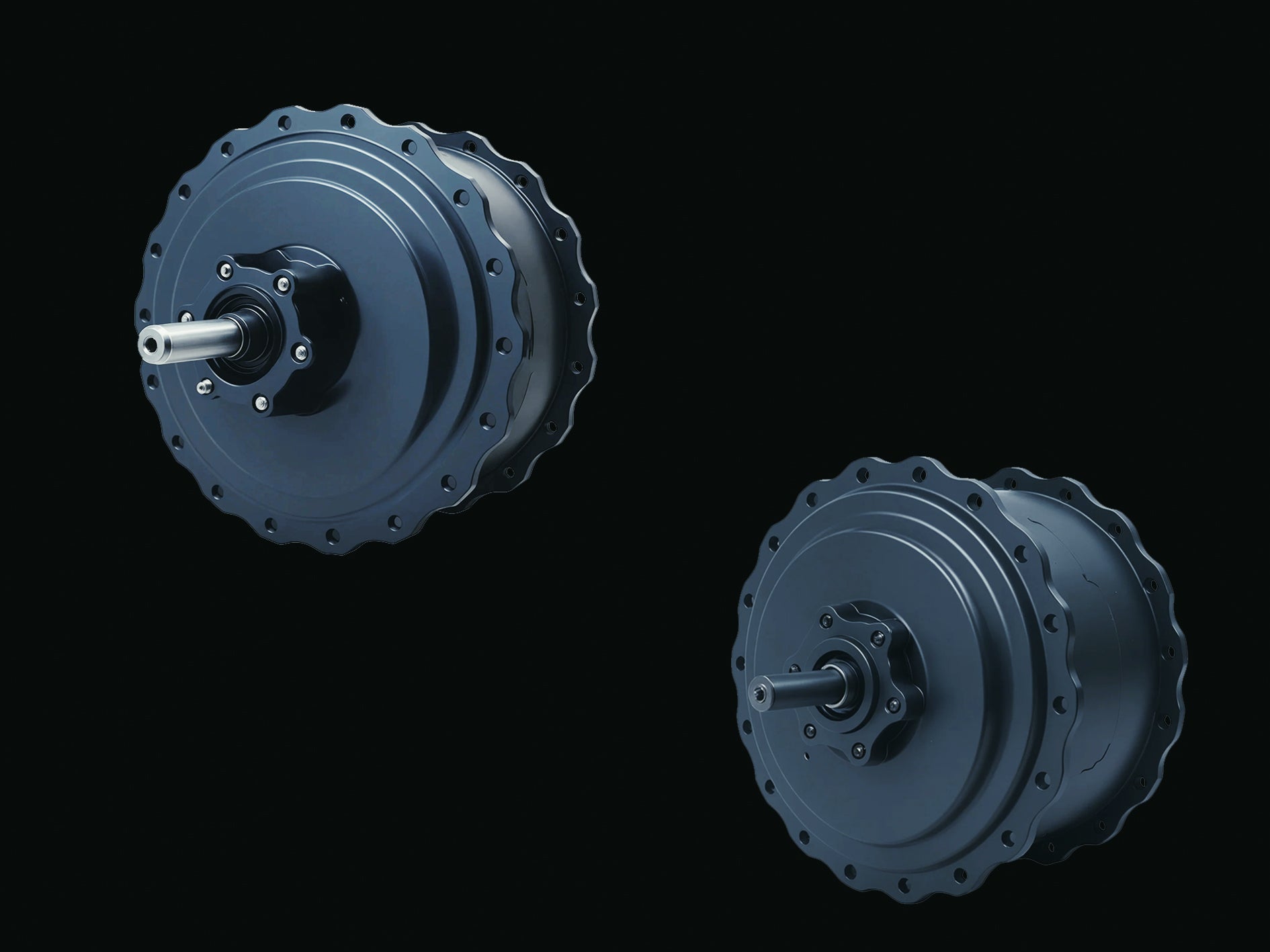Choosing the right motor system is crucial to maximising your electric bike's performance and ensuring it aligns with your riding needs. Let's delve into the differences between mid-drive and rear hub motors to help you make an informed decision.
Understanding Torque and Motor Performance
Torque, measured in Newton-metres (Nm), is the force that propels your e-bike forward. Higher torque translates to better acceleration and climbing ability. Entry-level e-bikes typically offer 30–50 Nm, suitable for flat terrains. For hilly areas or off-road trails, a torque of 70 Nm or more is advisable.
Mid-Drive Motors: Integrated Power and Efficiency
How They Work:
Mid-drive motors are centrally located, directly powering the bike's crankset. This placement allows the motor to leverage the bike's existing gears, providing efficient power distribution across various terrains.
Advantages:
- Enhanced Climbing Ability: Utilises the bike's gears to maintain optimal torque, making steep ascents more manageable.
- Balanced Weight Distribution: Central placement offers improved stability and handling.
- Efficient Energy Use: Adjusts power output based on gear selection, conserving battery life.
Considerations:
- Higher Maintenance: More complex mechanics may require regular servicing.
- Cost: Generally more expensive due to advanced technology.
Rear Hub Motors: Simplicity and Reliability
How They Work:
Rear hub motors are located in the rear wheel, providing direct propulsion. They operate independently of the bike's gears.
Advantages:
- Ease of Use: Simple design with fewer components, leading to lower maintenance.
- Cost-Effective: Typically more affordable than mid-drive systems.
- Quiet Operation: Offers a smooth and silent ride, ideal for urban commuting.
Considerations:
- Weight Distribution: Rear-heavy design can affect handling.
- Limited Climbing Efficiency: Less effective on steep inclines compared to mid-drive motors.
Comparing Mid-Drive and Rear Hub Motors
|
Feature |
Mid-Drive Motor |
Rear Hub Motor |
|
Placement |
Centre of the bike, integrated with pedals |
Rear wheel hub |
|
Terrain Adaptability |
Excellent for varied terrains and inclines |
Best suited for flat terrains |
|
Maintenance |
Requires regular servicing |
Low maintenance |
|
Cost |
Higher |
More affordable |
|
Weight Distribution |
Balanced |
Rear-heavy |
Rincc E-Bike Models: Tailored to Your Riding Needs
1. Rincc RN50: Versatile All-Terrain Performer
Equipped with a 750W motor and Shimano 21-speed gears, the RN50 is designed for diverse terrains. Its 29-inch all-terrain tyres and adjustable front fork ensure a comfortable ride, whether you're commuting or exploring trails.
2. Rincc RN70: Off-Road Powerhouse
The RN70 boasts dual 750W motors, delivering a combined 1500W of power. Its 26x4.0-inch fat tyres and hydraulic brakes provide exceptional control and stability on rugged terrains, making it ideal for off-road adventures.
3. Rincc R200: Compact and Convenient
Featuring a 750W brushless motor and 20x4.0-inch fat tyres, the R200 offers a balance of power and portability. Its foldable design makes it perfect for city dwellers and travellers seeking convenience without compromising performance.
Conclusion: Choosing the Right Motor for Your E-Bike
Your choice between a mid-drive and rear hub motor should align with your specific riding requirements:
- Opt for a Mid-Drive Motor if you frequently tackle hilly terrains or require a bike with superior torque and efficiency.
- Choose a Rear Hub Motor for flat terrains, urban commuting, and if you prefer a low-maintenance, cost-effective option.
Rincc offers a range of e-bikes catering to various needs, ensuring you find the perfect match for your lifestyle.






Share:
Which Electric Bike Motor is Right for You: Front or Rear?
Where Can You Charge Your Electric Bike?